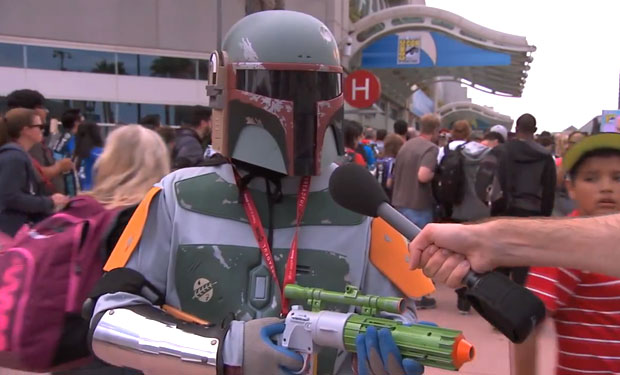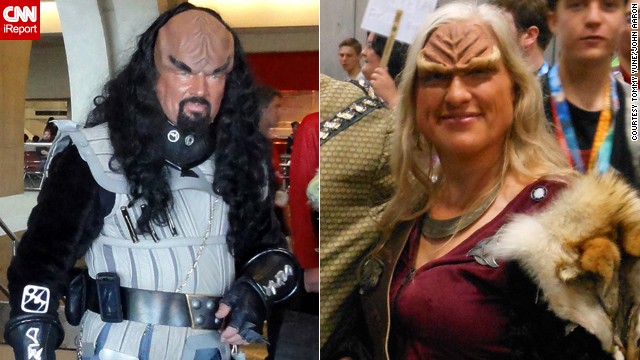Last week, San Diego Comic Con coverage swept across the internet like a swarm of locusts, devouring and overshadowing everything in its path. I mean this in the nicest way possible, of course, as it included tons of updates about things fans have waited ages to hear about (Avengers: Age of Ultron images, Gal Gadot as Wonder Woman, etc.) I was among those who could not attend and was therefore even hungrier for second-hand information, so I found myself trolling the internet every hour or so looking for new coverage of the goings on at Comic-Con.
More than once, what I found left me shocked and appalled. In regards to coverage of the cosplayers in attendance, many of the articles and gallery links were thinly veiled nerd bashing, and others fostered a hostile environment in their comments. These were often by bigger media providers, which made it particularly offensive.. Anyone who works as some form of “press” can tell you how selective SDCC is about who they give press access passes to the con: they want only the most highly circulated programs and well regarded news sources. And yet, they allowed in several outfits that openly harassed costumed attendees or paved the way for them to be made the butt of jokes on the internet.
Jimmy Kimmel. CNN. These outlets should know better. I thought professionalism and common sense went hand in hand, but apparently not. So let's take a moment to break down what these pieces of coverage did wrong and highlight some great, high profile galleries that did it right!
CNN's Impromptu Cosplay Competition
When I think CNN, I think of 24 hour world-wide breaking news in all forms with a professional reputation. Why, then, did CNN's SDCC coverage consist of a gallery of stolen photos pitting cosplayers dressed as the same character against one another?Pictures of people in pre-made Halloween costumes were stuck side by side with images of other cosplayers, as the same character, in artistically crafted one of a kind costumes. Then the question was asked “Who wore it better?” This might not look hyper-offensive at a glace, but anyone who has faced unsolicited criticism of their costumes can tell you how awful it feels to be forced into a competition you wanted no part in against a cosplayer who's way above your level.
Contrary to what Heroes of Cosplay might have you believe, cosplay is not about competition. It's about people showing their love of a character, series, or costume design through the physical representation of part of the work. It's not about looking impressive or sexy: at it's core, cosplay is about having fun. That's not to say that there isn't competition within the community – each convention has it's own costume masquerade, where cosplayers can show off what they made and compete for prizes. But these cosplayers were walking the halls of the convention: they didn't enter any contest or masquerade and they certainly did not consent to being pitted one on one against another cosplayer. Ultimately, while none of these cosplayers were referred to as “fail” or any other mean adjective by the author of the post, he certainly left a lot of room for cyber bullying of the cosplayers who happened to be chosen for the gallery.
Instead of setting cosplayers up to be better or worse than one another, CNN could easily have gathered pictures of all levels of cosplayers and displayed them individually in a gallery, to better appreciate their courage, spunk, and love of their characters. One great example of this kind of coverage was Business Insider, who simply referred to the cosplayers in their gallery as “The Best.” This praises the individuals included without making room to shame or criticize them or others who might be included. Another great example is New Now Next, which specializes in LGBT pop culture coverage, but included a gallery of “Cosplay Costume Cuties” from all walks of life, and had great photography.
Ultimately, CNN should have done its research and gone with a more straightforward coverage approach. A reputable news source shouldn't use the same kind of catchy, troll-baiting headlines as random-joe independent nerd bloggers, and they should be respectful of the cosplayer culture as if they were covering any other new (to them) subculture. Thankfully, the readership of the article by and large had the same criticisms as me and commented to that effect. We can only hope that CNN is more careful about the sort of tabloid-esque pseudo articles they put their name on from now on.
Jimmy Kimmel's Sexual Harassment Hour
New #PedestrianQuestion - Have You Ever Had Sex in Your @Comic_Con Costume? http://t.co/Klr0T6T7ks #SDCC2014
— Jimmy Kimmel (@jimmykimmel) July 29, 2014
I will admit it: I have never seen any of Jimmy Kimmel's show before this week. Apparently, it's very common for him to ask complete strangers on the street a “pedestrian question” which is usually inappropriate or uncomfortable with the intention of making his audience laugh. This sort of interview style is unfortunately common at comic conventions, and it absolutely shouldn't be. SDCC's code of conduct states “Harassing or offensive behavior will not be tolerated.” Even so, amongst all the disrespectful attendees who still don't know that Cosplay =/= Consent, Jimmy Kimmel's camera crew was there, sexually harassing cosplayers for the benefit of his viewers by asking two simple questions, “Have you had sex in costume?” and “Do you want to?”If this had been some amateur film crew without a major press outlet, or even just a common attendee asking cosplayers this, it would have been taken for what it was: sexual harassment. And while no cosplayers (that I know of) have come forward to say that they felt harassed by this camera crew, it's undeniable that these questions constitute harassment. While the cosplayers featured in his bit wereclearly down to be harassed on camera for the world to see (and probably signed a release to be on TV before the cameras started rolling), I fear that the non-geeky masses who saw the segment will think that A) cosplay is necessarily a sexual thing, or B) that it's okay to treat cosplayers like this even if you aren't a film crew for national television.
In the end, this bit wasn't funny, and we in the cosplay community aren't laughing. Sexual harassment isn't a laughing matter, and the tragic and awful incidents that victimized cosplayers over SDCC
weekend really drove this point home. Ultimately, if Jimmy Kimmel wanted to (try to) be funny, he could have gone about it in a way that didn't contribute to conventions being a hostile environment for cosplayers. For example, MTV posted a funny gallery of “The 17 Most WTF Cosplay Pics from San Diego Comic Con.” Don't let the title fool you: none of the captions on these photos make fun of or objectify the cosplayers in them! While the author talks about having nightmares a lot, it's mostly because of the creepy nature inherent to the cosplayed characters, and several fandoms that are often bashed on the basis of being a little off-beat
(Homestuck, Bronies, Furries) are represented here without being singled out.
In conclusion, I hope that the controversy surrounding these two prime-time media articles causes SDCC to re-think their press policy as well as their harassment policies further. If the convention wants to be represented in the best light posible, they should strive to get the best coverage possible, not just the highest traffic coverage. Clearly the only types this coverage will attract to Comic Con in future years are the ones who are in it to exploit or demean cosplayers, and frankly, we don't want them there.
Elizabeth Schweizer, also known as Sushi Killer, is a life-long geek. She is most proud of having started the CONsent movement and can be found sitting on panels at many California conventions. In her spare time she reads and sews non-stop.
Did you enjoy this article? Follow us on Facebook to get more great content! We have a weekly podcast you can find on our main site. Also follow us on Twitter and Tumblr!


No comments:
Post a Comment